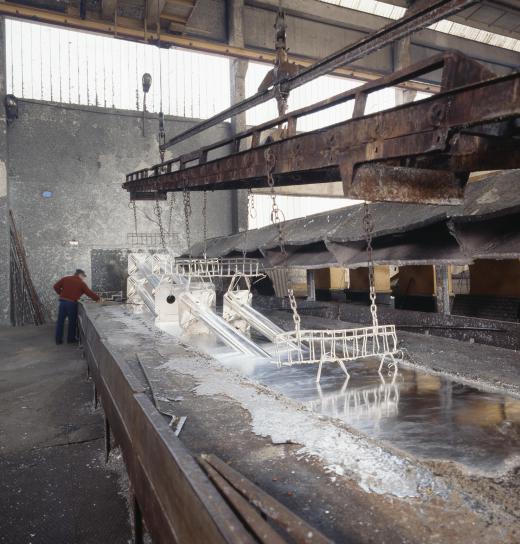Strut channel is a construction material used as a structural support system for wires, piping, and related equipment within a building. These metal channels are commonly used in the heating, ventilation and air conditioning, or HVAC fields to suspend equipment from the ceiling or roof deck. Strut channel is often referred to as Kindorf®, Metstrut® or Unistrut®.
Standard strut channel consists of a length of sheet metal bent and folded to create a stiff U-shaped channel. The edges of the channel are curved inward towards one another, which creates a groove along the top of the material. This channel allows installers to interlock the components together, or to fit bolts and other fasteners into the body of the channel. Most strut channel also features regular pre-drilled holes along its length for quick and easy fastening. These channels come in a variety of shapes and sizes to meet the needs of different installations.

Manufacturers rely on a variety of metals to construct strut channel. While standard steel represents the most economical option, steel coated with zinc may be required in outdoor applications. This zinc coating, known as galvanizing, helps protect the channel from rust and corrosion. For additional resistance against corrosion, stainless steel may be used around chemicals or saltwater. Aluminum components also serve as a lightweight option in applications where weight is a primary concern.

One of the major advantages to using this system is that it allows HVAC installers to hang piping and equipment very efficiently. The channel can be arranged in almost any type of design to accommodate different types of equipment, and can easily be reconfigured over time as needed. These channels also accept nearly any type of fastener, including bolts, screws, and specialty clips. Those looking for an alternate to standard strut channel will often find it necessary to invest in a custom steel support system, which tends to cost more than strut channel in most applications.

Strut channel also plays a major role in the solar panel industry. These channels represent one of the most versatile and effective ways to install solar panels on a roof or on the ground. These materials are also a popular choice for use in solar racking systems. These channels give installers maximum flexibility over how the panel can be angled and configured. This allows users to adjust the panels in the field or over time to achieve the desired level of sun exposure.
